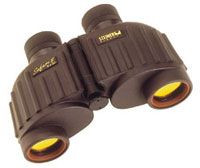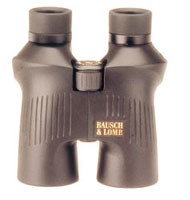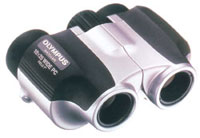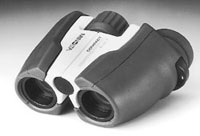Doubled Barrelled Optics
Binoculars For Outdoor Photography
Whenever outdoor photographers discuss their favorite gear, one significant item is frequently overlooked. Binoculars, though not categorized as photo equipment, can be invaluable for scanning or scouting an area and for searching out potential subjects. Especially in bird and wildlife photography, binocs can increase your odds of a successful outing. Naturally, this accessory is useful for other types of photography, too: sports, boating, butterfly, travel, racing, astronomical, etc. For anyone who has tried them, binoculars soon become a valuable accessory, as I discovered many years ago. Most photographers are familiar with lenses but may have some difficulty appreciating the finer points of binocular technology. Indeed, some of the terminology and concepts do differ when dealing with these double-barrelled optics. Before you begin shopping, consider the following information and recommendations. They can be useful when reviewing the specifications for several models, or the jargon in manufacturers' brochures. |
|
Power. This is another term for magnification, as denoted by the first number in binoculars' designation. At 7x, for example, the image is magnified seven times, appearing that much larger than it did to the naked eye. Models with magnification up to 20x are available, but higher power has some drawbacks. Recommendation: An 8x model--comparable to a 400mm lens in magnification--should be adequate for most purposes. A 10x model is the most powerful that photographers usually need. Because high magnification amplifies the effects of hand tremors, few of us can hold binoculars over 10x steady without bracing our elbows or using some firm support. If you routinely work with extremely distant subject matter, you may need higher power binocs but should consider a model with an Image Stabilizer or be prepared to carry a second tripod or monopod. |
|
Diameter. The size of the "objective"--the front lens--is specified in the second number in the description of binocs (e.g., the front lens of a 7x42 model has a diameter of 42mm). The larger the diameter, the greater the light gathering ability at any given power and the brighter the image. The view through a "fast" 7x50 model is nearly twice as bright as through a 7x35 model and four times as bright as through 7x25 binoculars. Recommendation: In theory, we all need very "fast" lenses and binoculars with an oversized objective lens. However, both types of equipment tend to be larger, heavier, and more expensive than their more typical counterparts. In fact, the majority of mid-size binocs are of the 8x25 to 10x30 type. I have always found these to be practical for general field use. For twilight viewing and astronomy, you might want a 32mm and 50mm objective lens, respectively. |
|
Prisms. Used to fold the light path for a shorter barrel--and to invert the image as in an SLR camera--prisms are standard on all binoculars. "Roof" prisms (denoted by a straight tube) are light and slim but more costly to manufacture: alignment must be perfect and "phase coatings" used to enhance sharpness and contrast. Because roof prisms are less fragile they are often used for binocs intended to withstand abuse and exposure to water spray. Traditional models with "porro" prisms may be more bulky but are common, especially in the affordable category. Not difficult to manufacture, they provide good contrast and "depth" for a three-dimensional effect. High density BAK-4 glass produces greater sharpness and definition than conventional BK-7 glass. Recommendation: Experts differ as to which of the two prism types is preferable. If compact size and light weight is important, select binocs with the slim roof prism. The greater durability is a bonus but avoid the inexpensive models that may not offer high sharpness and contrast. Do note that some truly exceptional binocs--with superb optics and rugged armor coating--use porro prisms instead. Frankly, some of the other factors discussed are far more significant in the decision-making process. (Hint: prisms that are silver coated offer superior brightness and color rendition.) |
|
Exit Pupil. This is the size of the circle of light that reaches your eye. The larger the exit pupil, the brighter the view and it will be more effective in very low light. If the exit pupil information is not provided in the specifications, you can calculate it: divide the size of the objective lens by the magnification of the binocs (e.g., a 7x50 pair has an exit pupil of 7.1mm while a 10x25 pair has an exit pupil of 2.5mm). The wider the exit pupil, the more useful the instrument before and after sunset. Recommendation: Binoculars with an exit pupil of around 3mm are typical and should meet most needs. Photographers who frequently work at dusk and dawn will want a model with a 6mm or wider exit pupil, just as they want "fast" lenses with maximum apertures of f/1.4, or f/2. |
|
Image Brightness. Manufacturers employ two distinct methods to denote light gathering ability. First is the "Relative Brightness Index," which is easily calculated if not provided in some specifications. Divide the size of the objective lens by the magnification then find the square of the numeral. For example, a compact 8x25 model would have an Index of 9.766 which is moderate (25 divided by 8 equals 3.125; the square of 3.125 equals 9.766). Some full-size binocs have higher brightness Indexes in the 16 to 18 range while a 7x50 model has an extremely high Index of 51 for an incredibly bright image. Other manufacturers provide data on the "Twilight Factor." This is calculated by multiplying a model's magnification by the diameter of its objective lens then finding the square root of the number. Hence, an 8x25 model would have a twilight factor of 14.14 (being the square root of 200). The higher the factor, the more suitable a model will be in low-light conditions. The factor for 7x50 binoculars is 18.71; this is very impressive even if the number does not seem substantially higher. Recommendation: When comparing several types of binocs, it's worth calculating the relative brightness Index for each one. An Index of 50+ signifies an amazingly bright view but the binocs are not as practical in the real world of outdoor photography; those with 8x or 10x power are very heavy, large, and expensive due to their wide barrel diameters. You'll find an Index of 6 (low) adequate for most daylight viewing, while 9 offers more versatility and 15 is great for all-purpose use. Photographers who often work at dawn or dusk might want an Index of 20+. |
|
Coatings. Like photographic lenses, many of the binocs' elements are coated with chemical films to maximize light transmission while reducing flare. "Fully multi-coated" indicates that all elements have received multiple coatings while "fully-coated" suggests that all elements have received a single layer of anti-reflection coating. Finally, some are specified as "multi-coated" indicating that at least some elements have received several coats. Recommendation: The manufacturing cost for both multi-coated types is higher, but these provide a brighter view with higher contrast and clarity, this is important if you use binoculars frequently. Those who use them mostly for recreational purposes would get by nicely with the fully-coated models. Not all manufacturers provide full specifics as to the extent of coating, but price and the reputation of the brand should provide some indication as to the probable use of anti-reflection technology. |
|
Premium Grade Optics. Some binocs incorporate aspherical elements to maintain high sharpness at the edge of the view. Others--especially high power models--may include a low dispersion element to minimize color fringing and increase sharpness. Thanks to new aspherics technology, some models with an aspherical element are not overly expensive. Recommendation: You cannot go wrong with high tech optics, but do note the following. The specifications for some of the finest and most expensive binocs on the market provide no indication that aspherical or low dispersion elements are included. Hence, this factor cannot always be used for comparison purposes among various brands. |
|
Eye Relief. A numeral provided in millimeters, this indicates the maximum distance at which the binocular can be held from the eye with a comfortable full-field view. Recommendation: If you must wear glasses when viewing, look for "long" eye relief: at least 15mm. Or consider a model with a diopter correction eyepiece. This amenity may preclude the need to wear your corrective lenses when using the binoculars, depending on the amount of correction your eyes require. Field Of View. The size of the area that can be seen through a pair of binoculars. This is sometimes stated in feet ("linear field") for a distance of 1000 yards or meters. Binocs intended for general viewing often have a field of view of 330 to 400'. Some manufacturers provide field of view in degrees ("angular field"), with 5 to 6 degrees being common. If the field of view is given in feet, divide by 52.5 to determine the angular field in degrees. If it is given in degrees, multiply the stated figure by 52.5 for the linear field in feet. |
|
Recommendation: The field of view varies from one model to another even when the magnification is identical. For example, one manufacturer's 10x binocs range from 4.9° to 7°. But as you move up to very high power models, such as the 16x binocs, the field of view narrows significantly (3° is common) as with super telephoto lenses. If you generally photograph very distant wildlife with a 600mm lens plus tele-converter, powerful binocs with a moderate field of view may be suitable. However, models with a wider field of view (7+°) are more useful for the following purposes: viewing the players in a sports stadium; scanning a large area looking for subject matter; watching the activity of a flock or herd; astronomy; and whenever the subject or the viewer is moving. |
|
Focusing Range. Because binocs are generally used for distant subject matter, close focusing is not a significant concern. This factor generally varies from 10 to 15' although some binocs offer extreme close focusing ability (e.g., 6') while others are limited to a minimum distance of 30 to 50'. Recommendation: For certain subject matter such as butterflies, extreme close focusing ability is important. However, for most sports and wildlife photographers, a minimum focusing ability of 15' is usually adequate. Other Features. Most manufacturers offer binoculars that are intended for particularly difficult conditions. Some are rubber armored for full shock resistance; others are water and dust resistant--sometimes nitrogen-filled to eliminate internal fogging in damp and humid locations; a few are actually submersible. Recommendation: Though not essential, any of these extras can be useful, particularly the ability to withstand a brief drizzle or blowing sand. If you frequently shoot around water or in a rain forest, the extra cost of a waterproof model may be justified. Light rubber armor is generally adequate for most photographers' binoculars; this feature is also appreciated on cold winter days. Unless you frequently damage camera equipment, it's unlikely that you'll need binocs intended to meet military specifications. Though not common, high power models with an Image Stabilizer will ensure a steady view without a tripod or when viewing from an unstable platform such as a boat. The "Ideal" Bi-nocs. There is no consensus among photographers as to the "best" binoculars because needs and preferences vary extensively. However, here is my suggestion for an all-purpose model, useful as a starting point in your own research or deliberations. A mid-size 8x25 (or similar) model with light rubber coating; weather resistance; angular field of view of 6+° or 325+'; fully multi-coated optics; close-focusing to 15'; and an exit pupil around 3 to 4mm should meet many needs while remaining acceptably compact and portable. For the best view, avoid zoom and focus-free models. High quality binoculars should last a decade, so buy the best you can afford. It's well worth personally inspecting several in your price range. Does it appear rugged and well constructed? Can you adjust the binocs so they fit your eyes perfectly? Are the eyecups well designed? Are the controls easy to operate when wearing gloves? Is the focusing quick and smooth? Is the view bright, contrasty, and sharp at all focused distances, even at the edges? And are the binocs adequately portable so you'll carry them happily on long outings? When the answer to most of these questions is yes, you have probably found an instrument that should satisfy your needs for years to come. Manufacturers/Distributors Bogen Photo Corp. (Docter) The Brunton Co. Bushnell Corp. (Bausch &
Lomb) Canon USA Inc. Carl Zeiss Optical Inc. Carson Optical Celestron International Deutsche Optik (Optolyth) Fujinon, Inc. Gamla Ent. (Sigma Binoculars) Leica Camera Inc. Minolta Corp. Night Owl Optics Nikon Sports Optics Olympus Corp. Pentax Corp. Phoenix/Samyang Pioneer Research (Steiner) Samsung Inc. Swarovski Optic Swift Instruments Inc. Tasco Vivitar |
- Log in or register to post comments












































